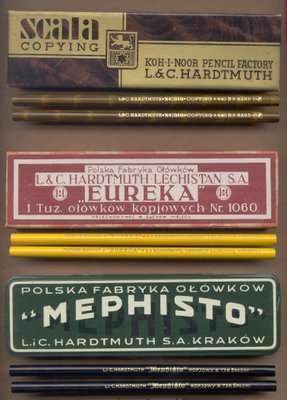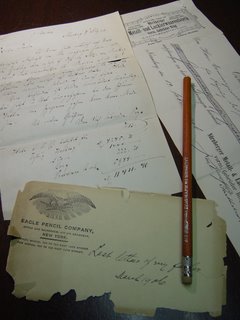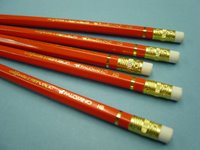
Later this week I’m attending the Annual Meeting of the U.S. Writing Instrument Manufacturers Association (WIMA). Participants include finished product manufacturers and marketers with operations in the US as well as component suppliers. I used to look forward to this event each year as an important chance to get together with key customers, other businesses and friends in the pencil and writing instrument industry. Coming from a family business background I can remember attending one of the former Pencil Makers Association meetings with my parents when I was still in High School and later after college before I had joined the family business.
It always seemed somewhat like a family reunion with a good combination of sports and social activities intermixed with our business sessions. Very friendly long term relationships. Everyone always seemed to have a good time in addition to active participation in what were regarded as valuable educational programs and committee sessions of the association focused on technical, product safety, trade or governmental regulatory issues.
Like many industry associations ours has suffered declining membership and industry participation resulting from trends of industry consolidation, movement of manufacturing off-shore, cost containment pressures, conflicting business interests of member companies, etc. This has already lead to the merger about 10 years ago of the Pencil Makers Association into the Writing Instrument Manufacturers Association and since then we’ve continued to lose membership.
An important by-product of these trends is the change in the group of meeting participants. First, there are fewer participants from each company due to cost containment reasons and people tend to schedule in and out quickly minimizing the time commitment. Fortunately, for me the meeting is being held in San Francisco this year so it’s close enough to home that it doesn’t require the normal time commitment of traveling to the East coast.
More importantly participation was historically heavily weighted to the business owners who were the top executives and decision makers in the industry. Now larger companies or even smaller companies who have been absorbed by some other diversified group send VP or sometimes lower level managers if they participate at all. For example, I think it’s been at least 10 years since the President of either Sanford or Dixon attended personally.
Committee activity, historically the hallmark of strength for our association, involved the active participation of numerous members for direction of the work of the Association. This function has declined and generally committees now only meet face to face as part of the Association Board meeting itself once per year with a phone conference here and there in between.
I currently Chair the Pencil Section that deals with issues specific to the pencil industry. I recently sent out an email to the committee members proposing we move forward with a
 program the Association staff has looked into to increase and improve promotion of the PMA Certification Seal. I’d like to see the Committee request the Association board to fund the program since in my view is the one program the association currently offers that has potential to have some positive impact for members if supported. (see my August 2005 Timberlines Post: What’s the Value of Pencil Certification?) In any event, my email asked for feedback and input on this proposal. I got one response and that came from the legal counsel to the association, not from a manufacturer.
program the Association staff has looked into to increase and improve promotion of the PMA Certification Seal. I’d like to see the Committee request the Association board to fund the program since in my view is the one program the association currently offers that has potential to have some positive impact for members if supported. (see my August 2005 Timberlines Post: What’s the Value of Pencil Certification?) In any event, my email asked for feedback and input on this proposal. I got one response and that came from the legal counsel to the association, not from a manufacturer.In the meantime I remain interested in consumer feedback on this particular issue. Do you place any more value on such third party certification programs, industry sponsored or not? Do you view a PMA, EN71 (European standard) or ACMI certified product as safer than one without one of these certifications? Does it bear any relevance in your purchase decision at all?
Finally, in a further effort to address the challenges of relevance as an association, this year we decided to focus the upcoming business sessions on International trade issues faced by our industry. We have invited participants from other Writing Instrument Manufacturing groups from around the world to this year’s meeting. We will have differing levels of representation from the associations in Japan, Europe, and Japan. We’ve scheduled four different speakers on a range of topics as well as an association round table to discuss how each association works to support its membership.
Will this lead to increased cooperation and coordination on global issues of product specifications and safety standards, counterfeiting issues, category marketing and promotion, etc? Will it be a first step to some form of International Federation of Writing Instrument Manufacturers? I’m skeptical at this point given the historically insular nature of each of these associations to focus on issues specific to their own region or country. What is clear to me is that US based manufacturers associations probably in many industries will continue to struggle without embracing and leading a broader international focus and collaboration with peer associations throughout the world.
For now our company continues to participate in the association feeling it’s better to try to show some leadership to improve the member benefits and support to those of our customers who remain members. Still each year when that invoice shows up to renew our membership I question the relevance and think of 10 other ways I could likely spend these funds to have a more direct positive impact on our business. 2006 will be a year of decision for me however as it’s simply too much expense to justify without seeing a positive trend of improved benefits from membership.











 revolutionaries remains an inspiration for us here at
revolutionaries remains an inspiration for us here at 


